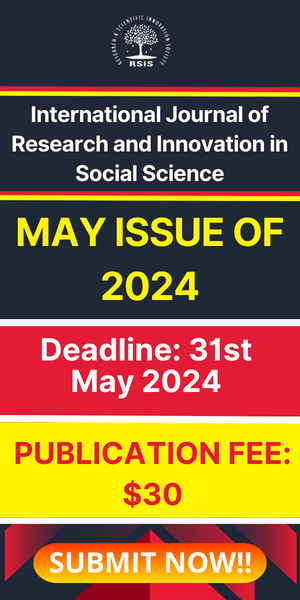Muck Disposal and Rehabilitation of Disposal Sites: A Review
- February 13, 2018
- Posted by: RSIS
- Categories: Engineering, Mechanical Engineering
International Journal of Research and Innovation in Social Science (IJRISS) | Volume I, Issue IV, April 2017 | ISSN 2454-6186
Muck Disposal and Rehabilitation of Disposal Sites: A Review
Sandeep Kumar Singh1, Payal Singh2
1Assistant Professor, Dept. of Mechanical Engineering, G L Bajaj, Greater Noida-201308 (UP), India
2PG Scholar, Dept. of Mechanical Engineering, IIT Delhi, Delhi-110016, India
Abstract:- During the construction of dam, large quantity of muck has been generated from different structure, from which only small quantity of muck has been used and balance have to be dispose off. In order to reduce the quantity of muck excavated can be possible by improving in the blasting process such as change in the parameter of blasting from which less amount of muck will generate and fragmentation is of desire size, so it can be directly use as aggregate and very less amount of muck have to dispose. Disposed quantity of muck may alter the water quality due to erosion from the site, vegetation at the site will control the erosion. It can be quite useful for taking various priority based mitigating measures such improved blasting, management for control quantity of muck generation as well as different biotechnical measures for controlling the soil erosion and made the site useful by growing vegetable and grain on the site which considered only a waste land during disposal process.
Keywords: Muck generation, Fragmentation, Aggregate.
I. INTRODUCTION
A large quantity of muck has been generated as a result of tunneling and other underground excavations, and construction of roads in mountainous areas. Some quantity of muck may be utilized at the site after processing and balance quantity of muck have to transport and dispose. Muck needs to be disposed in a planned manner so that it takes minimum space and will not be hazardous to the environment. To avoid the adverse impacts, the management of muck requires an environmentally sound manner of its disposal and rejuvenation of disposal sites using engineering and biological measures.
S. Strelec et al. [1] stated about to obtain beneficial cost for entire production system and fragmentation of muck in control. Fortunately, different technologies are available today for estimation and prediction of size of fragmentation. So, applying the available methods by the construction engineers carefully, optimum size of fragmentation can be obtained and it also reduce the cost of drilling and blasting which therefore cut the cost of whole production system.


